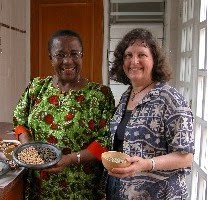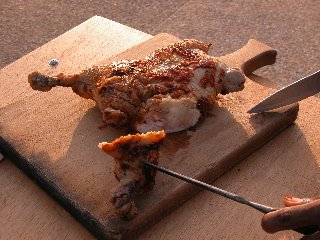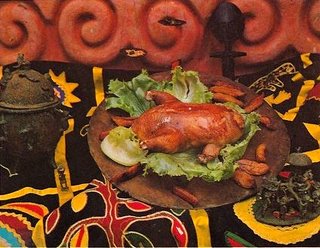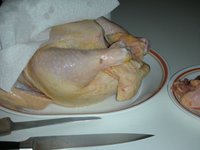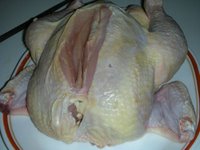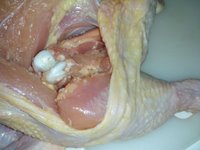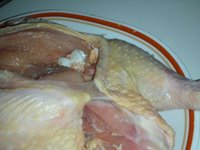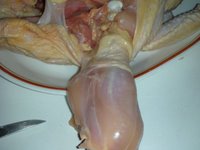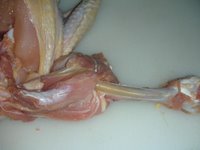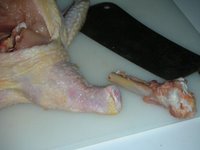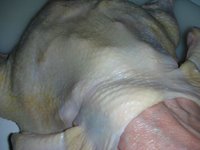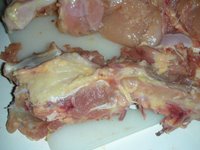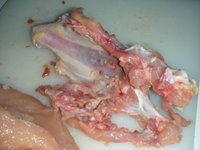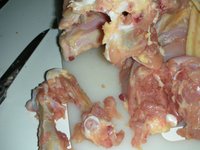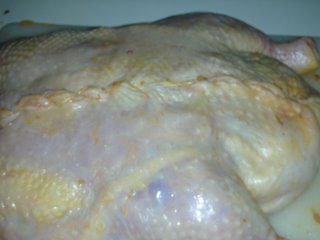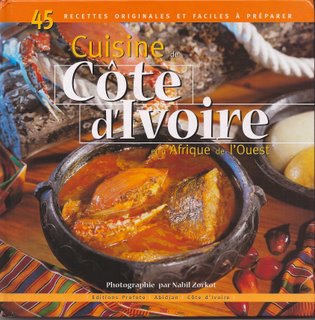Breakfast menu for the Obama visit to Ghana 11 July 2009
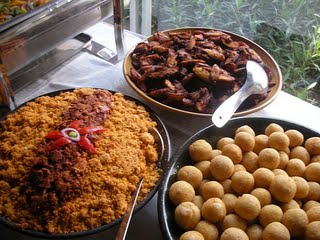 Below is the menu provided to me by Barbara Baeta Bentsi-Enchill, the Executive Chairman and founder of Flair Catering Services in Ghana, of the breakfast buffet served to President and Mrs. Obama and their entourage at the Presidential Castle on 11 July 2009.
Below is the menu provided to me by Barbara Baeta Bentsi-Enchill, the Executive Chairman and founder of Flair Catering Services in Ghana, of the breakfast buffet served to President and Mrs. Obama and their entourage at the Presidential Castle on 11 July 2009.I've unsuccessfully scoured the Internet trying to locate ANY photos of the food or buffet lines. This omission seems to indicate a glaring lack of curiosity about or interest in Ghanaian cuisine displayed by the myriad photographers--all of the breakfast pictures show only the important dignitaries present, and I've not been able to find one that shows the food.
What an opportunity missed.
Tropical Fruit Juices (NOTE: I assume this would have included orange, pineapple, mango, papaya or similar juices). All of the items in bold will be found in our upcoming cookbook, and some are things I've already blogged about. I've included a couple of representative photos I've taken at Flair, but these ARE NOT from the July breakfast.
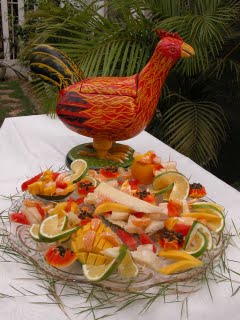
Variety of Tropical Fruits (Again, probably Ghana's fantastically sweet pineapples, along with papayas, mangos, soursop, melons, oranges, etc.).
Tom Brown (porridge made from toasted corn flour)
Hausa Koko (a spiced millet porridge)
Akra (a black-eyed pea fritter, aka kose, akara)
Beans Stew (a stew often made with smoked fish and red beans or black-eyed peas and eaten with ripe plantain)
Fried Plantain (probably ripe or "red" plantain slices)
Waakye with Meat Stew (rice and black-eyed peas with a meat stew made with tomatoes, onions, probably beef, etc.)
Galifoto (also known as "gari foto," a one-pot made from cassava meal similar to Brazil's farofa)
Oto with Boiled Eggs (a traditional dish made from mashed yam, onion and palm oil garnished with hard-boiled eggs)
Individual Steaks of Fried Fish (while Ghanaians often eat tilapia, Barbara said they used grouper steaks for this meal)
Abolo (a baked corn dough and flour or sweet potato dough; another version omo abolo is made from rice) & Kenkey (steamed soured corn dough balls)
Shito (pepper sauce)
Scrambled Eggs with Bacon
Grilled Tomatoes & Sausages
Brown & White Rolls
Butter
Assorted Jams & Marmalade
Tea
Coffee
Hot Chocolate
Labels: Baeta, Flair, Ghana Obama meal, Obama African menu

